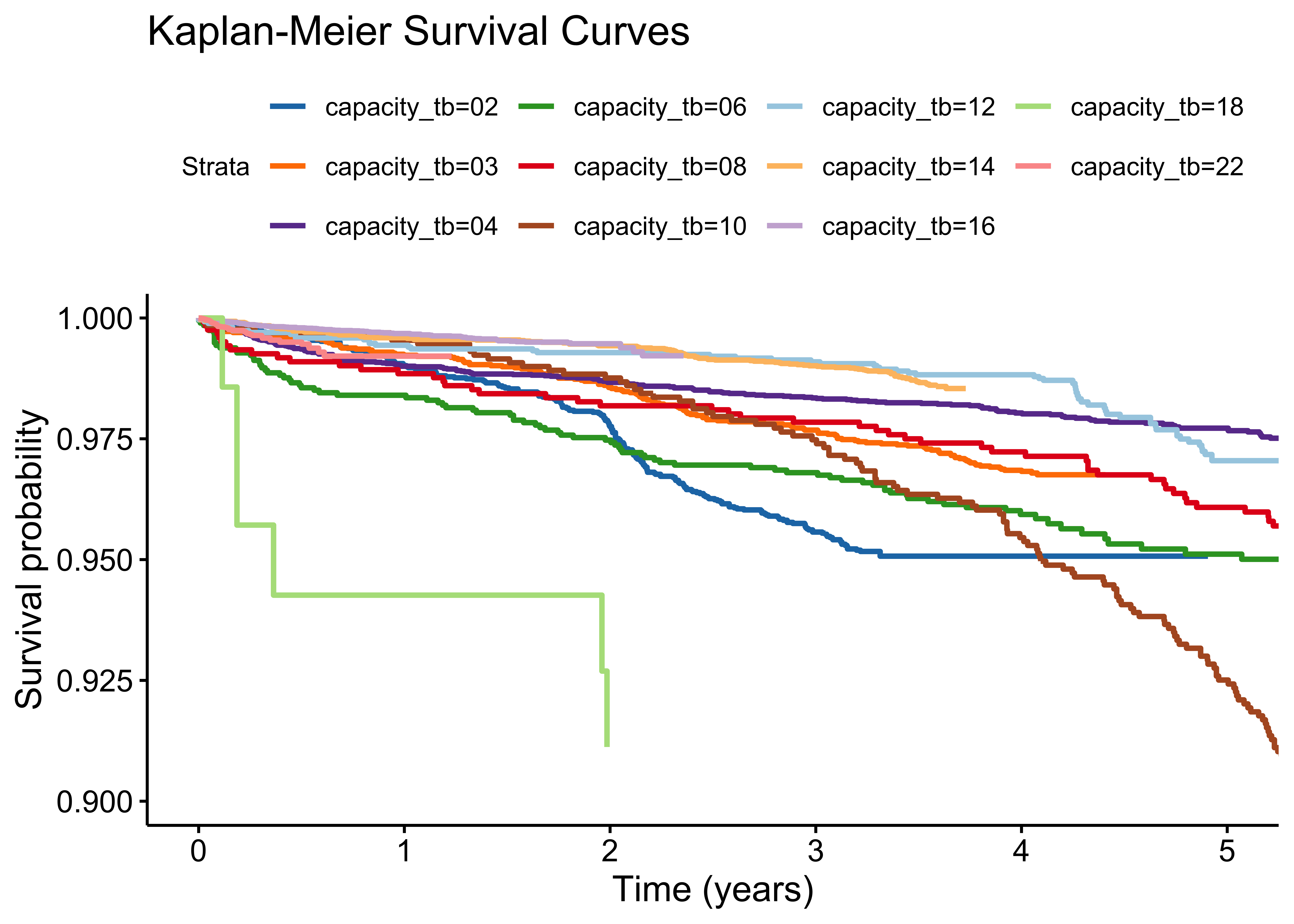Hard Drives for your Homelab: beyond $/TB
I’m shopping for hard drives for my homelab. I plan to use these drives to backup every computer in my home, so I need a lot of storage. I would like this storage to be reliable so I don’t lose my backups, and ideally I would also like this storage to be cheap.
It’s relatively simply to calculate the storage costs of different drive models based on $/TB, but that doesn’t take into account my main source of anxiety: drive failures. I want to be reasonably confident that my backup drives will still be functional in 5 years, especially if I put them under heavy load for writing and recovering data. Fortunately, the cloud storage provider Backblaze has some great data on hard drive reliability. They do a quarterly analysis of this data on their blog, but since I’m a data scientist, I also did my own analysis. Check out the link for all the data and code!
Bottom line
I like 16TB drives a lot. They’re not top-of-the-line in terms of size, so their price is reasonable, and they’re proven to be extremely reliable. In particular, the Seagate 16TB Exos drive is a good price (I currently see recertified ones on ebay for $165). Look for the model st16000nm001g.
A tale of 2 drives
I estimate that the 16TB Seagate Exos drive has a 5-year survival rate of about 95%, which equals about a 1-in-20 chance of failure after 5 years of heavy use. At 10.31 per TB. To adjust for 5-year-survival, we divide by the survival rate: 10.31/.95 = 2 per year over that period: not bad!
If you’ve got more money to spend, and are highly anxious about drive failures, check out WDC (formerly HGST, formerly Hitachi). WDC makes the top-of-the-line drives in terms of reliability, but they can also be a lot more expensive. The 16TB WDC Ultrastar drive tops my reliability estimates, with a 5-year survival rate of about 98%. This is pretty impressive: 98% survival rate means a 1-in-50 change of failure over 5 years! However, this drive costs a lot more than the equivalent Seagate drive. I currently see one of them on ebay for 280 for a new one. At 13.06 per TB. To adjust for 5-year-survival, we divide by the survival rate: 13.06/.98 = $13.33 to store 1 TB for 5 years, including the probability of failure.
Seagate makes a great drives at a reasonable price, but if you’re willing to pay 25%-50% more, you can get what I think is the most reliable drive in Backblaze’s dataset: WDC model wuh721816ale6l4.
One final caution
Be careful buying 3TB drives, especially used. The least reliable drive in Backblaze’s data is a 3TB drive, with a 5-year survival rate of less than 20%.
Plots
Here’s the raw survival data, for the most reliable drive model at each size category. Note that we only have 2 years of data for the 16TB drives, so we’re extrapolating 5-year survival for this drive class. I’m pretty confident that these drives will continue to be highly reliable, but time will tell.
The x axis is years since installation. The y axis is the % of drives that survived that long. Note that the 18TB line is a very small sample size and I wouldn’t read too much into it yet.
